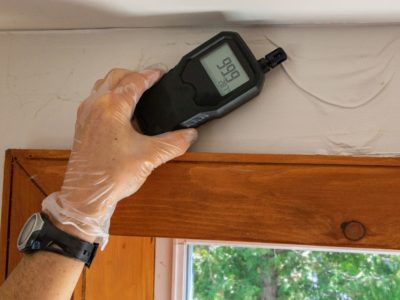You’ve probably seen the headlines that landlords will need to ensure that their residential Buy-to-Let properties have a minimum Energy Performance Certificate (EPC) rating of C by 2030. But what does that mean, and how can landlords prepare for the new EPC ratings?
EPC changes for landlords
EPC changes are a part of the government’s Warm Homes Plan, and from 2026, there are plans to update how energy performances will be measured and scored.
Whilst the consultation on EPC changes for Buy-to-Let properties closed on 2 May 2025 and is now under review, landlords are left waiting to see what the new regulations will be and the timeframe of their implementation.
What is an EPC?
Starting with the very basics, Energy Performance Certificates (EPCs) are used to evaluate and score the energy efficiency of UK properties. A property’s energy efficiency is rated from A (most efficient) to G (least efficient).

Current EPC regulations
Currently, unless a valid exemption is in place, landlords cannot let properties covered by the MEES Regulations with an EPC rating below E.
UK rental properties are also required to have a valid EPC to ensure tenants are aware of the efficiency of the home they are renting. Failure to provide a valid EPC could result in a fine anywhere between £500 to £5,000, so it’s important to ensure that you are currently operating your rental property based on current regulations.
EPC ratings changes: What we know so far
Under the proposals, all new tenancies will require an EPC rating of C by 2028, with all existing rental properties needing to achieve this standard by 2030.
This is significant, as over half of the approximately 5 million private rented sector properties currently fall below this proposed C rating, according to Angus Stewart, founder and CEO of eco-Landlord.
The way in which EPC ratings are calculated are also set to change from 2026. Currently, EPCs are calculated based on how much energy the property uses for things like heating and lighting, and how much energy it loses, often through poor insulation. An assessor works this out by calculating your property’s Standard Assessment Procedure (SAP) score. Simply put, the higher your SAP score, the better your EPC rating will be.
However, there are concerns that properties heated with electricity (with heat pumps, for example) are being penalised as electricity is more expensive than gas.
The proposed fairer way to calculate EPCs, which may come into play in 2026, is designed to provide a better oversight of the long-term performance of the property. Full details on the changes to how EPCs will be calculated have yet to be published.
Ready to dive deeper into how these proposed changes to EPC ratings could impact your rental portfolio? Head over to YouTube and watch the full discussion with Angus Stewart, CEO of eco-Landlord, in UK Property News Episode 5 (Part 2) – Proposed EPC efficiency changes = big costs for landlords?
EPC upgrade tips for landlords
For Buy-to-Let landlords preparing for upcoming energy efficiency regulation changes, it’s worth doing your research to establish if you can benefit from grants or funding. For example, if your tenants are receiving Universal Credit, there may be specific funding opportunities available through your local authority.
If you are planning to make upgrades over the next few years, research what grants are available in your area and note their deadlines when planning your renovations.
It is also worth mentioning that a zero-rate VAT was introduced in the 2022 Spring Statement on key energy-saving materials. This applies to items such as insulation, heating and hot water controls, solar panels, and heat pumps. This exemption can help to reduce upfront costs but also makes it far more achievable for landlords to hit future EPC targets.
The VAT exemption on energy-saving materials is in place until 2027.
An additional tip shared by Angus Stewart, founder and CEO of eco-Landlord, in his interview on UKPN, is, “If you do any work on your property, keep the receipts and get a statement from the builder or whoever did the work for you. This way, when the assessor comes along, you can prove what you’ve done. It’s also a good idea to take “before and after” photos of the work. This visual evidence will help you demonstrate the measures you’ve taken to improve the property, ultimately helping you get the right certification you need.”
Getting ready for EPC changes
Although 2030 feels far away, don’t get caught off guard by upcoming energy efficiency regulations!
For a deep dive into what landlords need to know and how to take action, follow the link below to the ‘UK Property News Episode 5 (Part 2) – Proposed EPC changes = big costs for landlords?‘ video on YouTube featuring expert insights from Angus Stewart. UK Property News is brought to you by the National Landlord Investment Show.
Also, stay informed and ahead of ongoing changes to the UK Private Rental Sector (PRS) by attending events like the National Landlord Investment Show on 9th July at Old Billingsgate, London, for a jam-packed day of education for landlords, property investors and any new investors. Register for your free ticket today to secure your place.























Comments